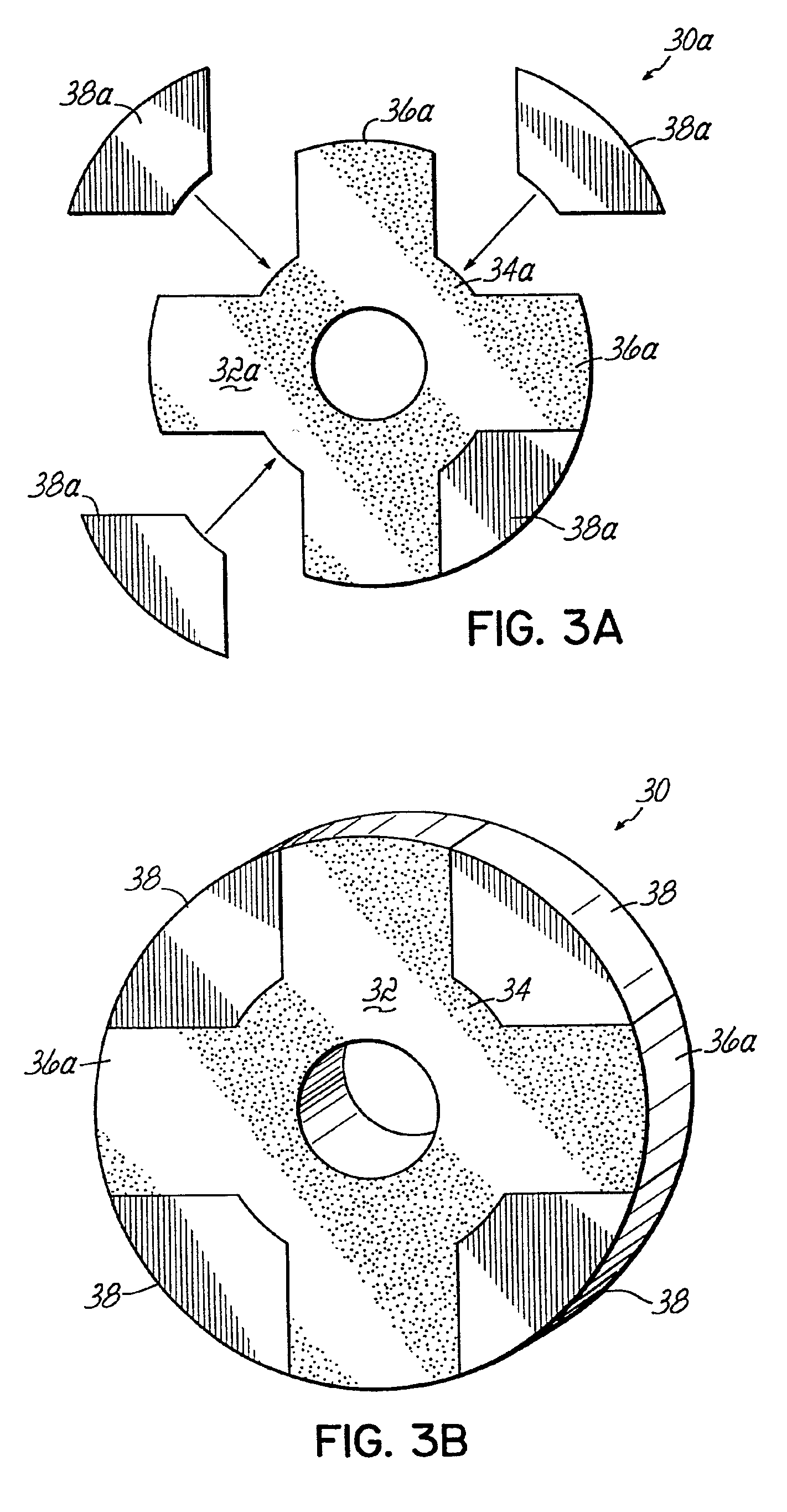Method of making a composite electric machine component of a desired magnetic pattern
a technology of composite electric machines and rotors, applied in the direction of magnets, magnetic circuit shapes/forms/construction, magnetic bodies, etc., can solve the problems of limiting the performance of electric machines, reducing the operating speed, and weak structural properties of synchronous reluctance rotors formed from stacked axial laminations, so as to achieve less cost, more output power, and speed up the effect of spin
- Summary
- Abstract
- Description
- Claims
- Application Information
AI Technical Summary
Benefits of technology
Problems solved by technology
Method used
Image
Examples
Embodiment Construction
[0026]The present invention is directed to sinterbonding electric machine components by pressing magnetically conducting and magnetically non-conducting rotor or stator segments separately to a green state, arranging the green-strength segments adjacent to each other with a small amount of powder material in between green-strength segments, and then sintering the whole assembly. The small amount of powder material, such as high purity iron powder, facilitates bond formation between the separate green-strength segments during sintering. By way of example and not limitation, the sinterbonding process of the present invention may be used on induction, permanent magnet, switched reluctance and synchronous reluctance rotors, as well as permanent magnet and reluctant sensor wheels. Sinterbonding combines the cost advantage of composite powder metal compaction manufacturing processing with the performance advantage of metal injection molding processing by allowing the magnetically conducti...
PUM
| Property | Measurement | Unit |
|---|---|---|
| outer diameter | aaaaa | aaaaa |
| outer diameter | aaaaa | aaaaa |
| outer diameter | aaaaa | aaaaa |
Abstract
Description
Claims
Application Information
 Login to View More
Login to View More - R&D
- Intellectual Property
- Life Sciences
- Materials
- Tech Scout
- Unparalleled Data Quality
- Higher Quality Content
- 60% Fewer Hallucinations
Browse by: Latest US Patents, China's latest patents, Technical Efficacy Thesaurus, Application Domain, Technology Topic, Popular Technical Reports.
© 2025 PatSnap. All rights reserved.Legal|Privacy policy|Modern Slavery Act Transparency Statement|Sitemap|About US| Contact US: help@patsnap.com



